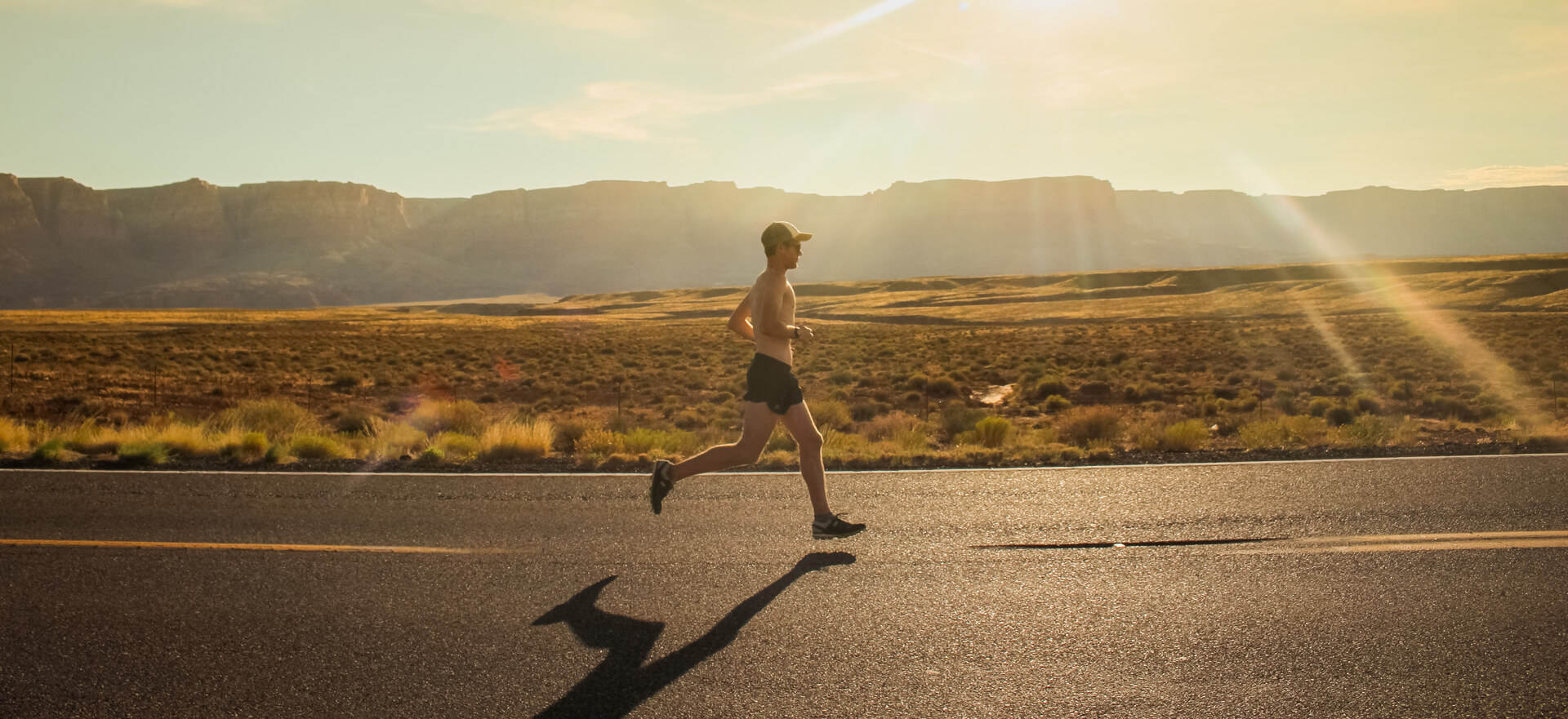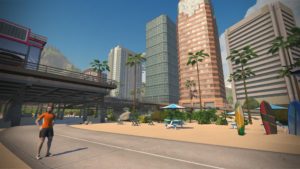
Gait analysis has rocketed in popularity over the years, and is now something being embraced by enthusiastic amateurs as well as elite athletes.
Viewed by some as a vehicle for selling products, gait analysis services can nonetheless provide valuable insights into your running and how you can improve it.
The Saucony Stride Lab goes two further than other gait tests you may have previously had, using not one but three cameras: one behind, one from the side, and one in front. The idea is that it allows for a thorough analysis of each runner’s unique stride, giving them a deeper understanding of their mobility, stability, control and form.
Having never had my running style analysed in any way, and having heard differing accounts of the benefits of gait analysis, I was a little sceptical about entering the ‘lab’.
However, Simon Callaway, Saucony’s technical representative coordinator, soon put me at ease, stating that this whole process is “more about the body than the shoe”.
I hopped on the treadmill and started a fairly steady run. Two minutes later I was hopping off, it was that quick.
I joined Simon next to the computer who then took me through step-by-step, camera-by-camera, what I was looking at.
The side camera
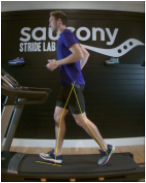 This showed the extension of the leg and knee flexion upon impact. Looking at my stride, I had a relatively normal level of heel-striking. However, upon further analysis, it appeared when pushing off with either foot, my legs were not totally straight. The straighter your legs are when pushing off, the more propulsion you get. This, said Simon, was because my hip flexors were, ironically, not flexible enough. If I were to work on this with some basic stretching, the straightened leg would further activate the gluteus medius making me a more powerful runner.
This showed the extension of the leg and knee flexion upon impact. Looking at my stride, I had a relatively normal level of heel-striking. However, upon further analysis, it appeared when pushing off with either foot, my legs were not totally straight. The straighter your legs are when pushing off, the more propulsion you get. This, said Simon, was because my hip flexors were, ironically, not flexible enough. If I were to work on this with some basic stretching, the straightened leg would further activate the gluteus medius making me a more powerful runner.
The back camera
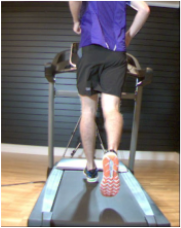 Everything looked good up until the hips. The slow-mo footage showed that when I landed on my left foot my right side dropped. This means that, despite being right-footed, I’m left-leg dominant. This, as it turns out, stems from my footballing background: my left leg is used to supporting my body while my right leg kicks the ball. Ever wondered why you find doing the quad stretch easier on one leg? Now you know.
Everything looked good up until the hips. The slow-mo footage showed that when I landed on my left foot my right side dropped. This means that, despite being right-footed, I’m left-leg dominant. This, as it turns out, stems from my footballing background: my left leg is used to supporting my body while my right leg kicks the ball. Ever wondered why you find doing the quad stretch easier on one leg? Now you know.
Simon instructed me that I should focus on building my core muscles with strength and conditioning exercises, otherwise the imbalance may cause injuries when significantly increasing mileage.
Front camera
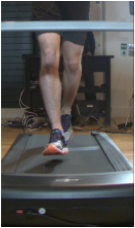 This assists assessment of knee rotation. For me it thankfully showed that my ground contact was steady with no signs of heavy overpronation. The way my forefoot dropped showed little rotation and no sudden slap on the treadmill from where my big toe came down.
This assists assessment of knee rotation. For me it thankfully showed that my ground contact was steady with no signs of heavy overpronation. The way my forefoot dropped showed little rotation and no sudden slap on the treadmill from where my big toe came down.
A positive end to an insightful test.
Was it worth it?
The report indicated that the best shoe for me is a neutral one, with little support.
You can see a final PDF report here.
The tests have turned out to be extremely helpful. I now know how to strengthen my running and how I can best avoid injury risk. Something Simon backed up, “the more we understand the body, the more we can reduce injury risk,” he says. “Likewise, if we can increase people’s knowledge of their running technique, it can also reduce injury risk.”
The Saucony Stride Lab is now up and running to the public and can be booked here via this link: http://www.stridelab.co.uk/
If you’re serious about running, I’d seriously recommend signing up.




